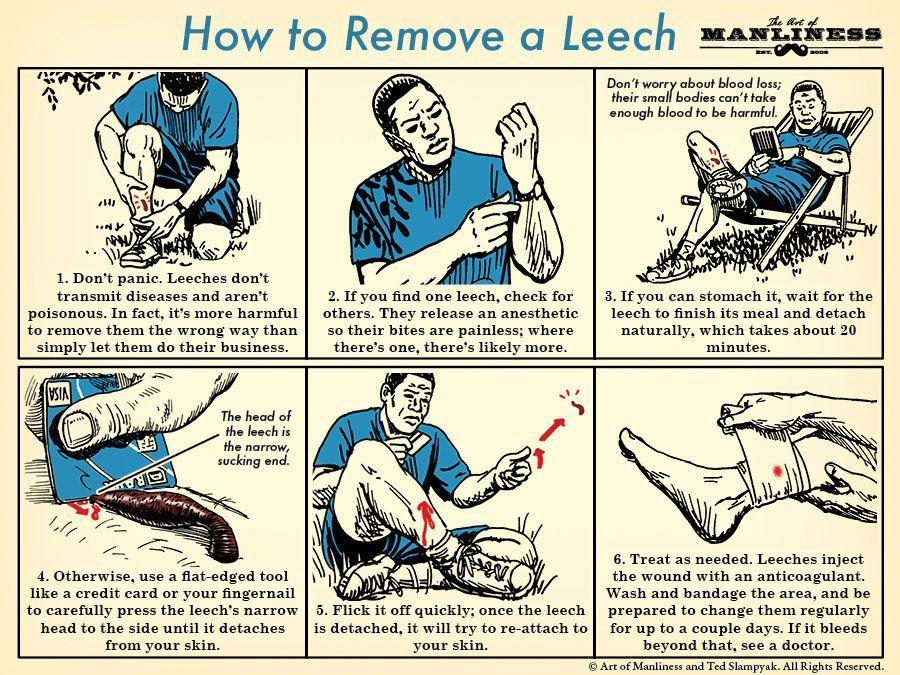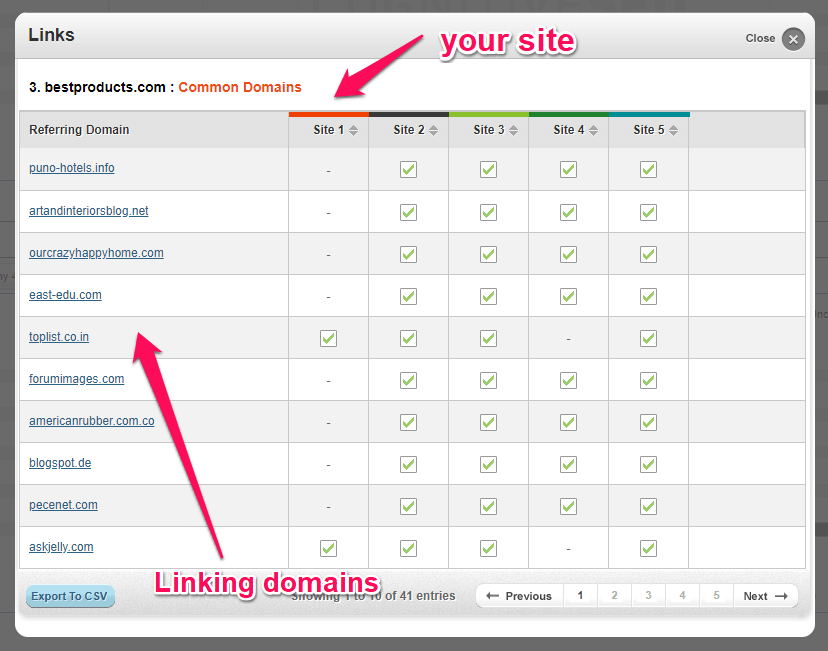Content Marketing is dominating the internet. It stays at the core of everything, be it an article, a video or even an ad. So, in order to succeed or even attempt to be successful at digital marketing, you have to create some form of content.
However, many people find it very difficult to create content or do link building, especially if they’re in a ‘boring’ niche. This complaint often comes not only from the website owners themselves, but also from various digital marketing experts trying to promote their clients.

In this article we’re going to write about how you can overcome this barrier and show you that it’s possible to create interesting content and do efficient link building in any niche.
The article doesn’t cover any OnPage SEO tactics. Technical SEO should be dealt with on any website, regardless of the niche it’s in. There is no excuse for a slow web host and website and for not having an SEO Plugin installed. If you haven’t fixed that already, I really recommend you to read these SEO resources first to make sure you don’t have any major OnPage issues:
- How Your Website’s Theme Affects SEO & Rankings
- How to Write SEO Friendly Blog Posts – The Complete Checklist
- Vital Hreflang & Multi Language Website Mistakes That Most Webmasters Make
- How to use Google AMP (Accelerated Mobile Pages) to Rank Better on Mobile
There are two main issues when dealing with ‘boring’ niches: content creation and link building & content distribution. We’ll discuss both of them in more detail, so that you can take the actions that will provide the best results.
1. Content Creation Tips
I’ve listed below some really useful things you can follow to make your life easier when creating content. They are placed in an order, so you can follow them as you start the content creation process. But, before we get to them, let’s start with busting the ‘boring niche’ excuse:
1.1 The Boring Niche Excuse (Busted)
Many times when I talk about implementing a content strategy for someone’s more narrow niche website, I get this remark:
“That’s not going to work for me. What are we going to write about? I’m not doing rocket science, like Elon Musk.”
If you think rocket science isn’t boring, I’ll remind you what’s it like (probably) to be a rocket engineer every day:

iopscience.iop.org
I don’t know about you, but it looks pretty boring to me (no offense intended to engineers/physicists).
It’s not about the niche, it’s about the way you put content out there. Musk is more interested in his actual customers, but likes to create hype around everything and he knows how to do it very well.

Source: indianexpress.com
If you’re not his customer, you’re not really interested in the technologies that he’s working on, but you think it’s cool, so you share it.
And that’s the secret to a content marketing strategy that also benefits SEO: getting people to share your content, even though they’re not your direct customers. Creating hype and convincing people to link to you.
| “There really is no such thing as a boring subject. Just boring, unimaginative writers.” | |
| Ben Hurt | |
Now that ‘hurt’, right? Well, I actually got this quote from CreativePool, where Magnus Shaw also said this: “It’s a nice sentiment. But any article on leech breeding is going to come off a little dull. Unless you’re a leech breeder, I suppose. Or a leech.”
That’s true. I mean… just thinking about leeches makes me go a little “eww”. But I have to use my marketer’s side of the brain. So immediately, I remembered that leeches are often used to treat different illnesses. It’s also Taboo and will probably cause some controversy. It might be a little dull, but it will work.
You might be thinking “Hey, that’s not actually about leech breeding!”. Well, it doesn’t have to be. One thing you can always do is think outside of your direct niche. People might not buy your leeches, but they definitely want to know what health benefits they might bring, or much, much simpler than that, how to remove them from the skin.
Here’s a really good example from The Art of Manliness:

The Art of Manliness’ Infographic showing how to remove a leech from your skin
In order to create share-worthy content in a ‘boring’ niche, you can use adjacent topics. This way you can address a larger audience and get more exposure.
Now another thing you have to do after publishing something cool and useful is to distribute it properly:
If you had a car detailing service and decided to promote it using some fliers, where would you send employees to share the fliers? Would you send them into a very populated mall, or would you send them to some car events? Well, I hope you chose the car meetings, because although the audience isn’t that numerous, they’re definitely more interested in what you have to offer.
This is especially important on the internet. Don’t just share your content anywhere. The post above would go well in the survival niche. This means that you need to find some survival oriented websites and Facebook groups you can promote your content to.
This infographic was eventually republished by LifeHacker, which proves that even big sites will share it.
Remember, your purpose is to make that post get viral. The social shares and backlinks you’re going to get from it will help your domain grow the authority it needs to increase it’s overall strength in the search engines. This means that when you publish new less awesome posts targeting your customers, with some ‘boring’ content, it will naturally rank higher.
Ok. We’ve seen how even leeches can be turned into something interesting. Let’s give some more examples, to prove that you can start creating interesting content in any niche:
The pool-building niche:
If you think pools are boring, excuse me dear Sir, pools are not boring. Not by far.
If a Turkish airline company can make something awesome regarding a pool, why couldn’t a pool-building company do so?
Here are just a few interesting content ideas from the top of the web:
- Top 10 most insane pools you won’t believe exist!
- Awesome pool design ideas
- 7 cool ways to make an entry into your backyard pool
How about blenders? You think blenders are boring? Over 800.000 Blendtec subscribers think otherwise:
But dump all that! Here’s a really ‘boring’ niche. Poop smell.
Well, I hope you get the point. Everything can be made interesting, funny and shareable. I know, I’ve mostly shared videos and images, but who says you can’t also build an article around that? Here, have a look at this awesome post from The Renegade Pharmacist. It went viral pretty quick and it’s about medicine, but it’s targeted to the masses.
The problem isn’t that a niche is boring. The problem is that you have to find a way to target a broader audience, other than your very narrow niche, so that you can get the links and shares you desire so much. Now the post from the Renegade Pharmacist was actually written by a doctor. This means it is well documented and the information in it is accurate.
One thing that can happen is that it’s hard to find someone to write content in your niche, because they have absolutely no idea about it. This can lead to misinformation of the audience and can result in negative feedback from your readers. That’s one of the reasons I believe that InHouse SEO and content creating works the best. You need a team of dedicated people that are genuinely interested in your product or subject.
Having an in-house team of writers that are passionate about your subject can help you create better content and eliminate the risk of misinformation.
The team from Examine.com turned these hard to understand scientific studies about nutrition into popular, easy to understand content that went on a tour around the web. This would not have been possible if the research hadn’t been done properly, or the writers hadn’t had any idea what they were talking about.
This might be a little hard to do in the leeches niche, but you can always sketch the ideas yourself. If you can’t find them or can’t afford to hire them, at least make sure you closely collaborate with the team of writers you outsource your content to, so that the information in your content is accurate.
Anyway, I hope I proved that you can turn regular, ‘boring’ things into something really interesting and share-worthy.
1.2 Idea Generation
When you first start writing, things might be simple. But as time passes and you churn through the topics, you get into a point where you have no more ideas.
Forums: Forums are a really good place to look for ideas. Even if forums aren’t as popular as they once were, old questions might still be unanswered. Forums are also very time consuming because you spend a lot of time reading everyone’s opinions before you can make a decision. You can synthesize the information into one single piece of content and eventually even share it with the forum users.
Social media groups: This is the modern forum. Social media groups are full of interesting topic questions. If you can’t find a group about your very specific niche, just go into a parent category niche or an adjacent one. For example, if you’re selling only fishing bait, you can go into fishing groups, or survival groups. People always ask questions there and share interesting things. You can pick that up and create some content around it.
Quora: Quora is a great resource to look for questions. Although the answers there are usually good, they still might not be so share-worthy. You can take that content, modify it and improve it and then make it 10 times more awesome. You will usually compete with Quora in the search engines if you write on the exact same topic.
Brainstorming: This is where you actually use your imagination to its fullest. Now the basic principle of Brainstorming is that you gather with some people around a whiteboard or a piece of paper and you start pouring ideas in, as soon as they come up. They you select what’s the best and dump the bad ones. While this is a good approach, I’d recommend you also have a notebook with you, because ideas pop up randomly. Write them down when they do. If you’re more tech savvy, you can use your phone. Just not while driving (I used to quickly record it at a red light).
Talking with friends: Talking with friends about the subject is really helpful in identifying new topics. You can talk with friends that are interested in the subject and with people that don’t have a clue. This way you’ll get some advanced topic ideas and some of the more basic ones, like questions that beginners usually ask.
1.3 Structuring & Content Types
Having a clear structure in mind before you start writing can help you maximize your productivity. This also helps the reader a lot. People don’t go through all the content. They skim through the article and skip video parts entirely. If you have a long article or video, break it down into smaller parts so people can get the main idea from just reading the headlines. If they’re interested in the particular headline, they’ll read it more in-depth.
How to & Tutorials: People will always look for this kind of information on the web. You can use Brian Dean’s Skyscraper technique for it. The technique implies researching the web, finding gaps and building a piece of content that fills those gaps.
Case study: Case studies are targeted to the readers interested in your topic on a deeper level. It usually goes well in the digital field, but can also work in other areas, like medicine and financial.
Interviews & Roundups: If you’re out of ideas or want to make your topic a lot more interesting, you can interview or mention experts in your field. This works very well not only for building interesting content, but also for distributing it. The people you interview and mention in your articles will be more than happy to share your content. Don’t start with giants. They carefully craft their time for profitability. Go for the small guys and build up.
Top list: As easy as it sounds, just make a top list of anything. Numbers in your title boosts conversions. It also helps if the numbers are odd. A good example is our article about SEO myths.
Controversial: There are ways and ways of making content interesting. One way is to discuss/create controversial topics. Whenever there is a popular topic that nobody really has an answer to, or opinions are different, you can write about it. It will have a lot of engagement. Just make sure you have some people on your side as well and don’t offend anybody!
Have you ever heard the saying “any publicity is good publicity”? It’s kind of true, you know?
Think of #bloggergate for example. Although John V. Stenson was not a nice person (building his brand around being very blunt and disrespectful) the truth is that Elle Darby did hit around 1.5 million views on her monetized videos and added around 15k subscribers to her channel. So, one way or another, this helped them both become more popular.
I’m not saying that Elle deserved to be treated like that or that I agree in any way with Stenson’s methods. You can’t excuse being an asshole with “It helped her as well.” However, Stenson’s theory is that if you can get into the middle of something where half of the people will be with you and half against you, you can profit. I think that you don’t always have to pick a side. You can just ask the question and avoid conflict.
There’s one more thing that always seems to do the trick: nudity, or sexualizing the content. In my opinion, there’s no marketing there. Obviously, putting some naked people around will get you attention but the marketing in it is 0. There’s no real idea behind it. It’s just the bottom of the barrel, exploiting basic human desire, or whatever that is.
Absolut Vodka recently published a commercial with what looks like their employees naked, under the pretext that “they’ve got nothing to hide”. But we hide our genitals for a reason. We hide them because we have evolved and become more selective, smarter. If alcohol truly had nothing to hide, they would put images of drunk people doing bad things, along with the ones of people having fun. They would put more emphasis on the “drink responsibly” thing. They would sponsor or build new detox centers. Now that, in my opinion, would bring your brand trust.
Video & Graphic: It has been estimated that by 2019, about 80% of the content that will be consumed on the internet will be in video format. If you want to make people engage more with your content, images and videos can help. You can always include some text to go with your video, like the transcript for example, or a short article to go with your infographic, explaining everything in more detail. Check out this article about analyzing your competition to see an example.
Answering all the questions: Answering all the questions on your niche website can be though, but very profitable, especially if nobody else does it. As an example, I have this really awesome video with Marcus Sheridan, where he explains this concept and proves that it works!
Often, I hear people saying: well, if I answer to all my problems for free then users won’t buy my product anymore. Of course, if you have a digital product, you can’t put everything out for free. But many times, a product has much more than that. It’s an organized system, with the purpose of sharing the information in the right order. Publishing bits and pieces won’t affect you with anything.
I’ve recently talked to someone who has a cleaning products seller as a client. I recommended that they create more interesting how-to-articles. One idea I came up with was “9 DIY cleaning solutions”. His answer was “He sells cleaning products! I can’t just tell people how to make them at home!”
While the people who will share that article will probably never buy his products, the purpose here is to get the social activity and links. Obviously, it’s a good idea if your product doesn’t have harmful chemicals. You can always market the idea of “I’ve already made this for you. You can buy it from me.”
1.4 Persona
A persona is an imaginative representation of your users. A business can have many user personas. The trick with personas is to identify them so that you may address the audience in a way that will resonate with them.
Think of an user persona as a fictional CV. Photo, age, location, interests, work places, experience, studies, etc. After you’ve created the persona, imagine talking to it. Get to know it and know how it acts. What gets it upset, you avoid, what gets it excited, you add more of.
This way, you can create content that is targeted to your ideal customers.
1.5 Storytelling
If you’ve ever watched an internet marketing product ad or motivational videos, you probably know what I’m talking about. It resonates with you and makes you want the product a lot. But most of it is BS. As I got into marketing, I started thinking all of it is BS.
But one video made me change my mind. A friend of mine was selling his product. His promotional video resembled everyone else’s. But I knew his story and I know it was true. The way he put it made it very appealing and even got me excited.
Storytelling is not about lying. Storytelling is about getting your customer excited about what you have to sell. The more personal you make it, the more you touch their heart and the more they will buy from you.
1.6 Proofread
It’s not expensive. You can start by asking a friend to take a look. I ask my sister to proofread my content all the time. She’s been happy to do it so far. You can also use a basic spell checking software, like Grammarly. Depending on your niche, grammar might have a small or big impact on your readers. Better if you get it good!
1.7 Monitor Your Results
You won’t hit success the first time you publish. To be honest, you probably won’t hit success the 100th time. But you will learn, through failure.
If you don’t monitor your results, you’ll have no idea what worked and what didn’t. That means you’ll always be relying on luck and will never have a strategy proven to give results. It’s very important to know what you should focus on and what not so that you don’t waste your time. Maximum results with minimum effort!
While the tips in this article are useful, nothing is stopping you from refining your own process of doing things. Who knows, maybe you’ll discover something new!
2. Link Building & Content Distribution Strategies
Ok. So you got your ideas, you’ve followed our SEO friendly blog post checklist, you’ve done your keyword research and you have your awesome piece of content ready and well optimized. Now what?
Well… you can’t just publish it and expect people to come roaring in to read it. You have to promote it. While promotion can take many forms, I’ll outline some of the things we use to promote our content and how you can apply them as well.
But first… let’s talk about the advantage you might have when dealing with boring niches.
2.1 The Boring Niche’s Big Advantage
Do you know where SEO is the hardest? In the SEO and marketing niches. It’s popular, we write awesome content, we have the knowledge and we promote it thoroughly… But yet, getting links from other relevant authority sites isn’t that easy. Nobody will want to link to you, because they know that will help you and will always keep that in mind.
Have you ever heard the phrase “Sure, I can link to you, but it has to be a nofollow link“?
We hear that a lot! Even if the content is awesome. Even if we worked hard. Even if we know the owners of the websites.
In a ‘boring niche’, however, when someone sees something awesome, you have the chance of them not thinking SEO first and actually link to you, just because the content you provide is absolutely brilliant.
Of course, many people in other niches know this as well and some will avoid linking to you, but it’s not the first thing that comes into their minds. They have editors and writers that might naturally link to you without thinking “Wait, I don’t want to help anyone ever, even though I expect help in return all the time”.
And with that, I’ll also recommend that if you see something awesome, share it! Even if it’s your competition. Not only that Google likes it when you share relevant and useful content, but you’ll prove to everyone else that you’re different. This can open up opportunities you never thought existed.
2.2 “Stealing” Links from Your Competitors
The best way to get backlinks quickly is by reverse engineering your competitors to find out how they’ve got their backlinks. Using the cognitiveSEO tool you can analyse your competitors to spot new backlink opportunities.
First, you can use the unnatural link detection on your competitors to identify their bad links. We’re looking for websites that have a clean, natural link profile.

Screenshot from the cognitiveSEO tool showing the Unnatural Link Detection feature
In this case, the website’s link profile does look pretty good. Click on the green line to find the good links. You can export them, build relevant content and the outreach to pitch your content to those websites.
Another interesting feature you can use is the Common Domains in the Competitive Link Analysis section. In the following graph, you can spot websites linking to all the competitors, but not linking to your website.

Graph from the cognitiveSEO Tool showing common domain between competitors
This graph tells us that those sites are very likely to share content in my niche. You can pitch them your content and expect a higher success rate.
2.3 Social Media: Groups & Pages
Social Media is a great way of getting your initial exposure. While Facebook Pages are the first place you probably share your content on, they aren’t necessarily the best for distribution, especially since the recent algorithmic changes. When you make your post, try to get people to comment on it. Facebook distributes your content depending more on the engagement rate, and comments are the best type of engagement you can get on your posts.
Another thing that works well is to find groups around your topic (the same groups you’ve used to get ideas from) and promote the content there. Don’t overdo it! The admins will quickly ban you if you do so. Start off by answering questions and being helpful. Always share other content as well. If the admin is a website owner, share their content from time to time. This will get you a greener pass to be able to post new things.
Also, the purpose of this is to get social shares. Avoid posting promotional things. If you want to do so, create your own group. Which reminds me… are there any Facebook groups in your niche? If not, having the first one is not a bad idea!
2.4 Blog Comments
I love it when I start talking about blog comments being a legit way to get some backlinks. People always jump in and say “It doesn’t work!” or “You’re going to get penalized if you do that!”.
But you know what the funny part is?
They tell me those things in the comments! With links back to their sites, lol.
Blog comments are a great way of getting initial traffic to your website. The key to it is not overdoing it. By overdoing I mean posting on irrelevant blogs, 20 times per day. If you instead find some relevant blogs and really have something to say about the topic, don’t hesitate to comment and leave a link back to your website.
If your comment is good, people might even follow the link and end up on your website. Then you can capture them in your e-mail list and spam them from there. Just joking! Don’t spam through e-mail. It’s against the law.
2.5 BrandMentions
A really good way to get links is to find the unlinked mentions that you already have. Sometimes, when people mention your brand or product, they forget to link to you, or might link improperly.
Using a tool like BrandMentions can help you identify these link building opportunities. The tool monitors your brand and notifies you about fresh web mentions, as soon as they happen. You can contact the people that mentioned you and ask for a link to your website. Most of them will be happy to give one.

Screenshot from the web mention monitoring tool, BrandMentions
You can always try a free alternative, like Google Alerts, but it won’t always get you the results you want and deserve. However, it’s a good idea to try them both out, just to see the difference, hehe’!
2.6 Link Reclamation Method
There are many ingenious methods for link building. One of them is the link reclamation method. You can definitely use it to build high quality links. This method requires the cognitiveSEO tool and the concept behind it is the following:
Website links to content > Content disappears because of various reasons > Website loses traffic
What can you do? Profit, of course! Here’s how:
1. Find your competitors’ broken pages and links.
2. Update or re-create the content of the website the broken link originally led to.
3. Contact the webmasters who have the broken link on their site and recommend them your alternative.
Basically, you will be helping some sites clean their pages of broken links, while you gain some really relevant links your competitors used to have.
Conclusion:
Not every niche out there is interesting for everyone, but I hope that reading this helped you get some content ideas for your ‘boring’ niche. Now you have a general blueprint on how you can come up with ideas to create the content and also promote them accordingly.
If you still think your niche is so boring that you can’t come up with new ideas, let me know your niche in the comments and I’ll try to help you come up with some cool ideas.

 Site Explorer
Site Explorer Keyword tool
Keyword tool Google Algorithm Changes
Google Algorithm Changes

Leave a Reply!